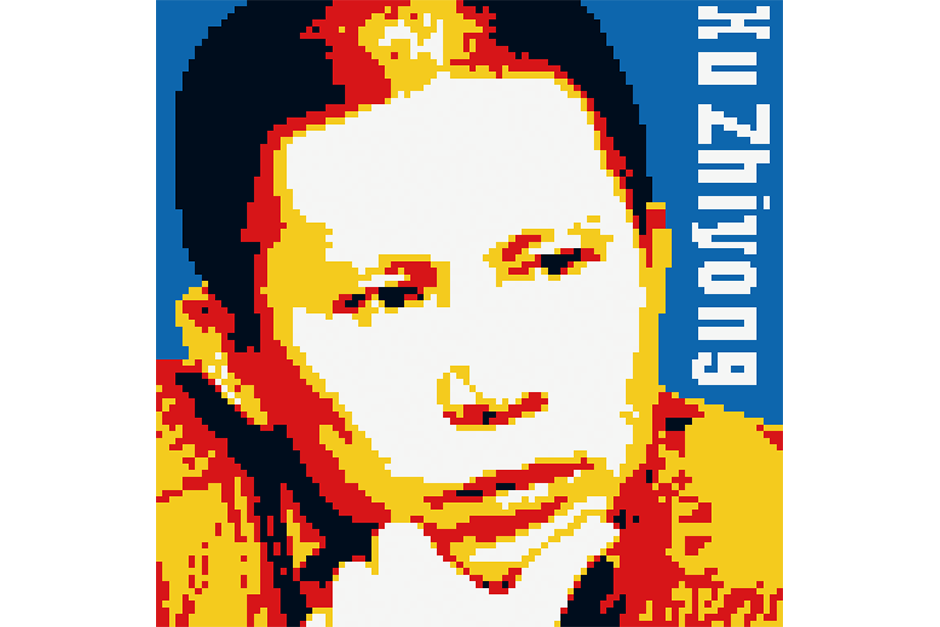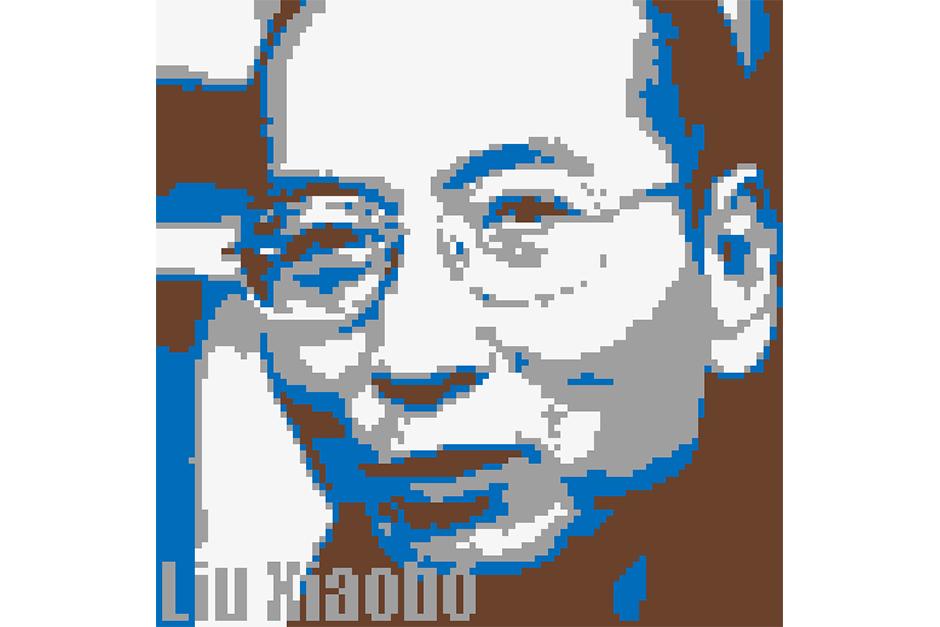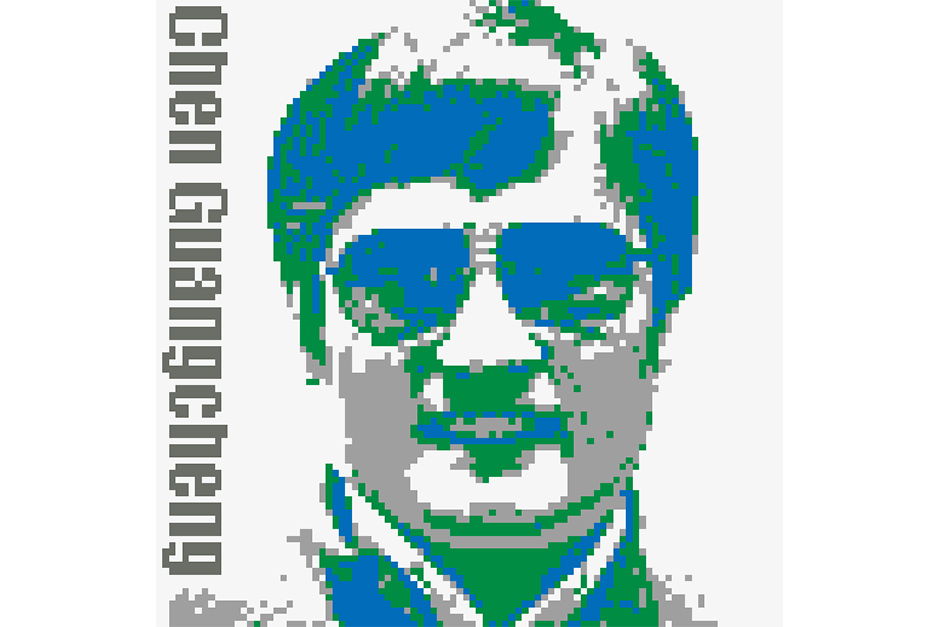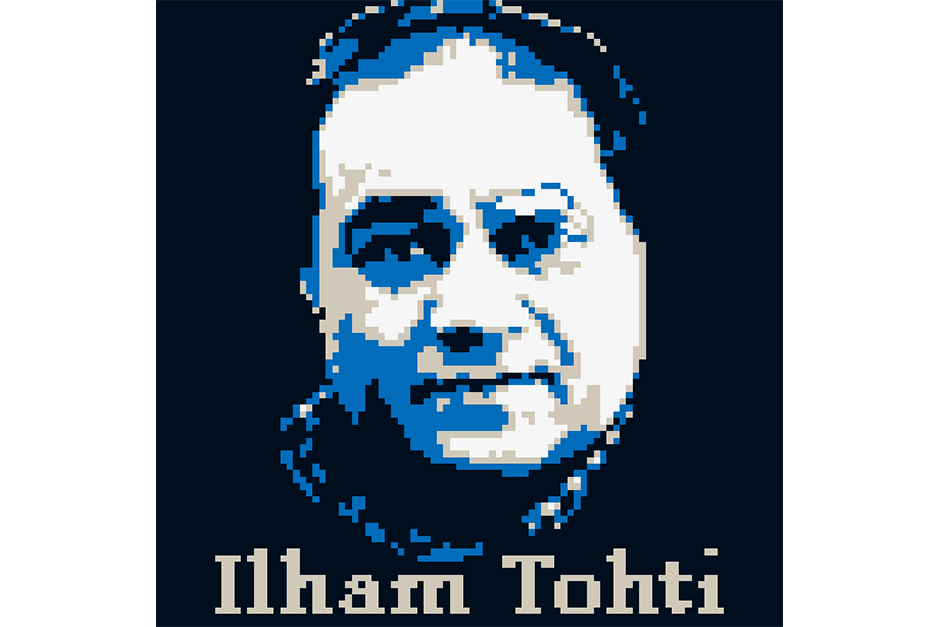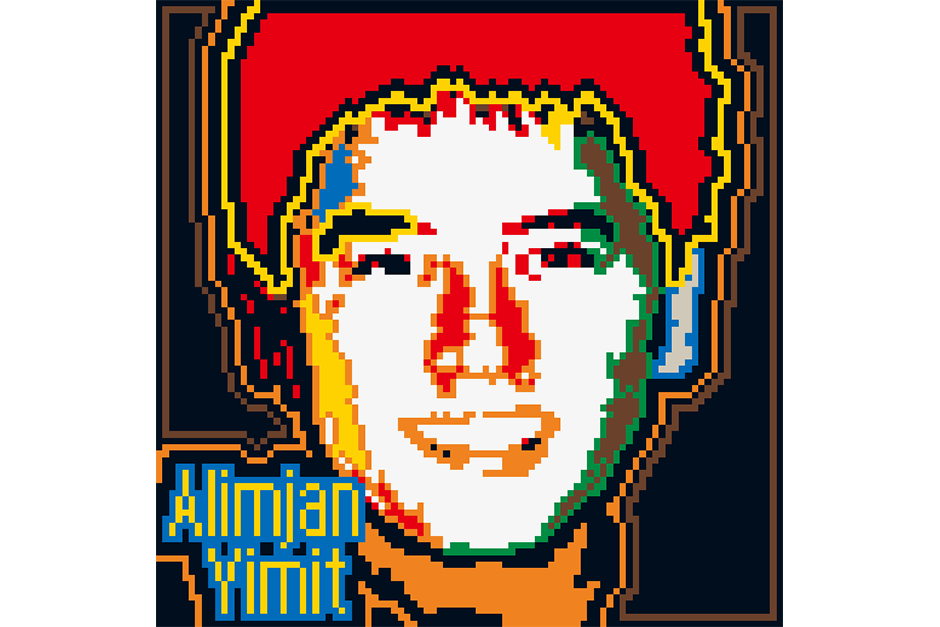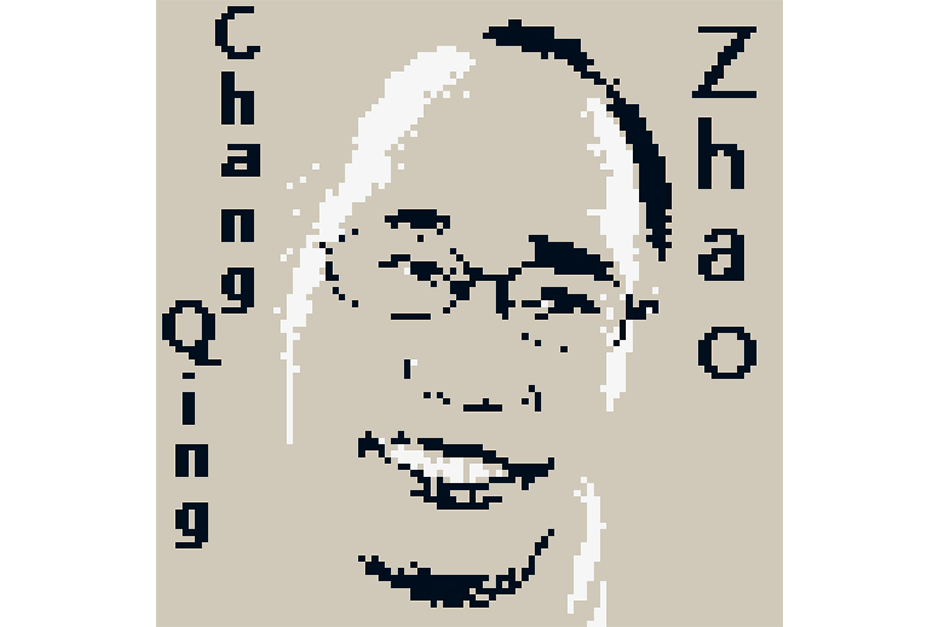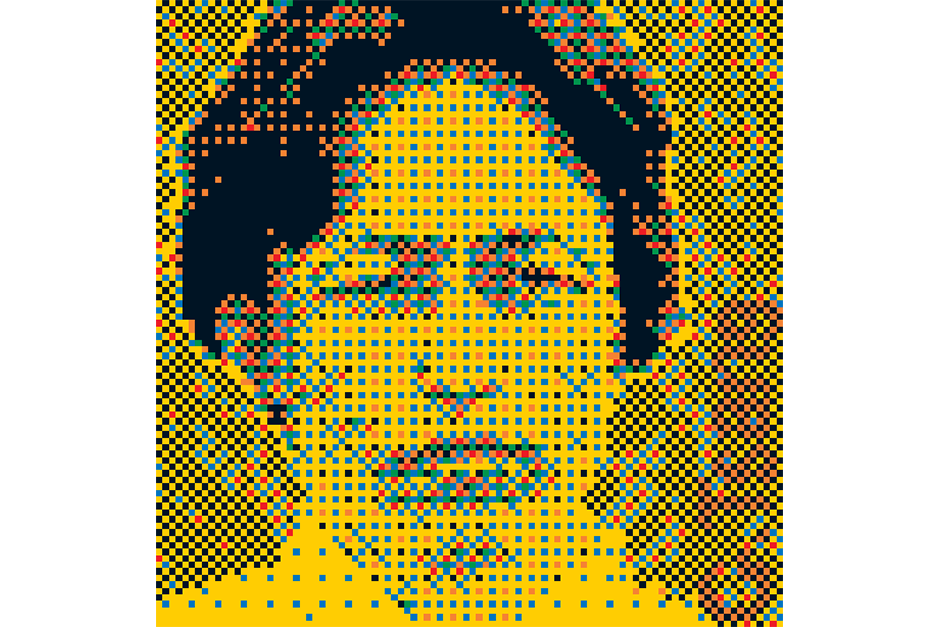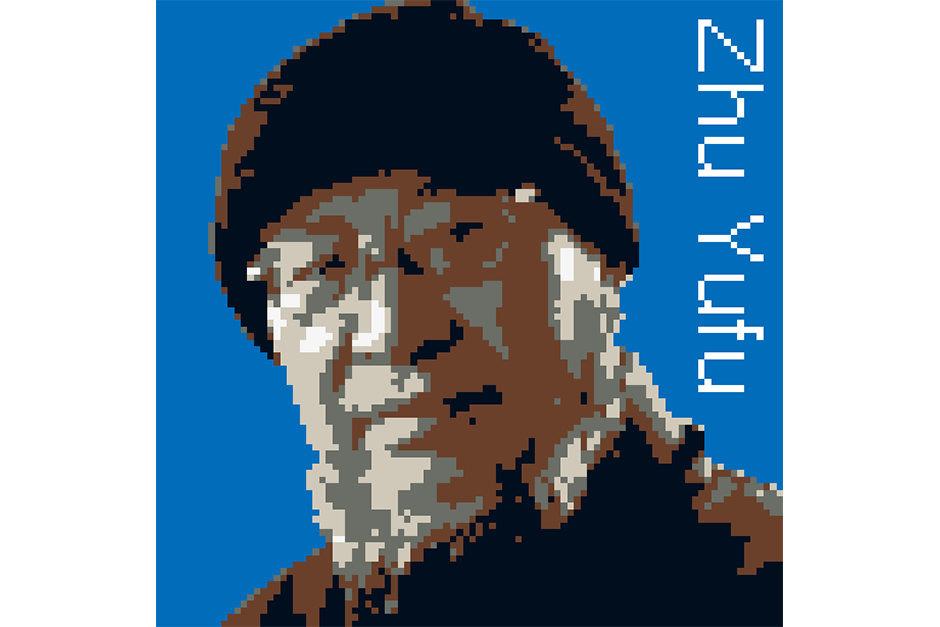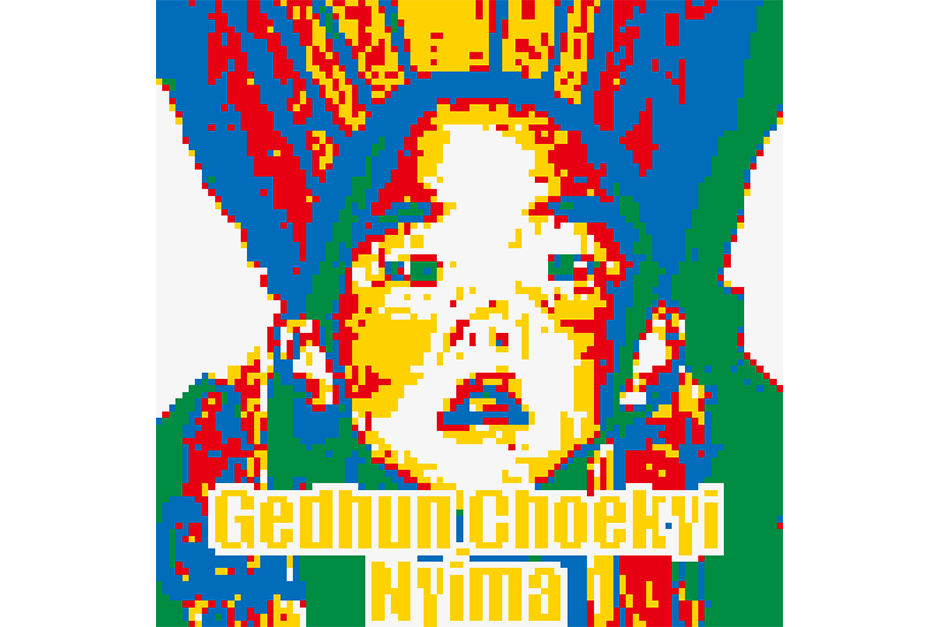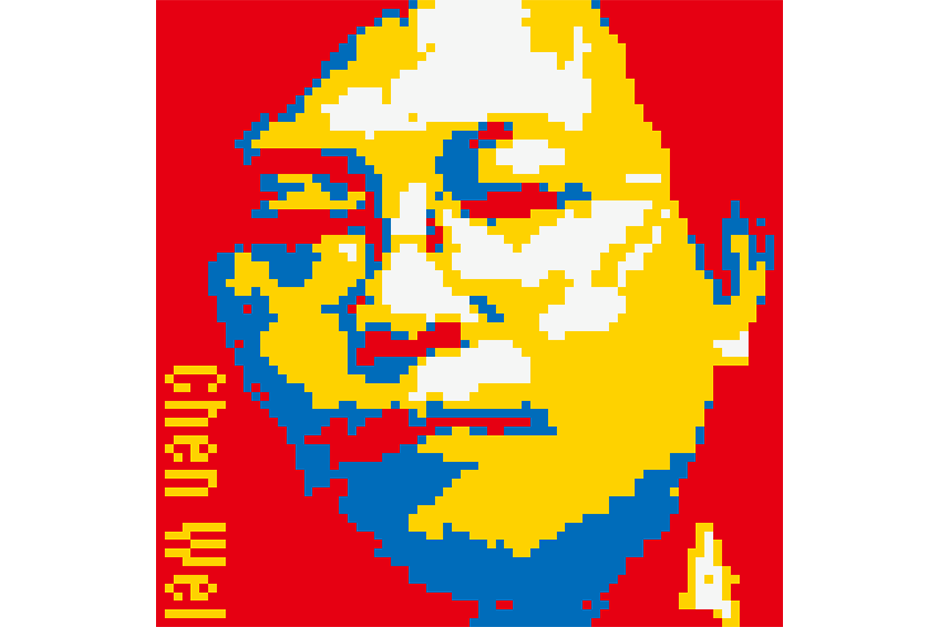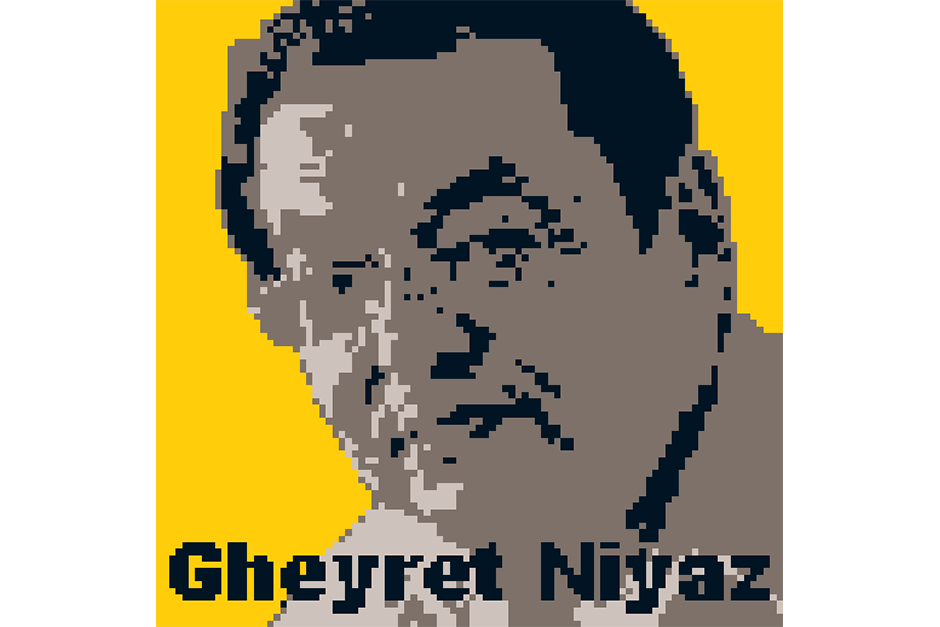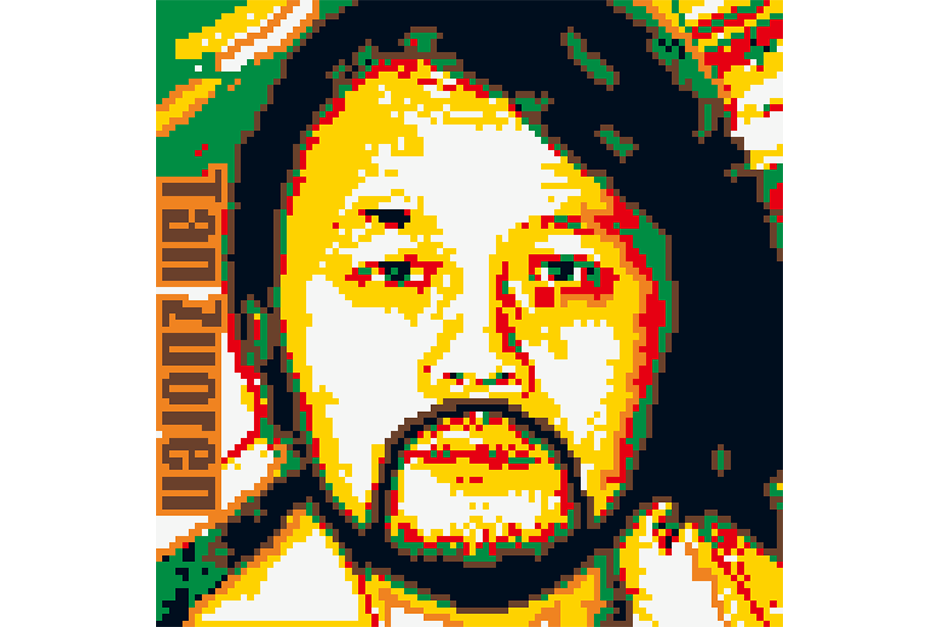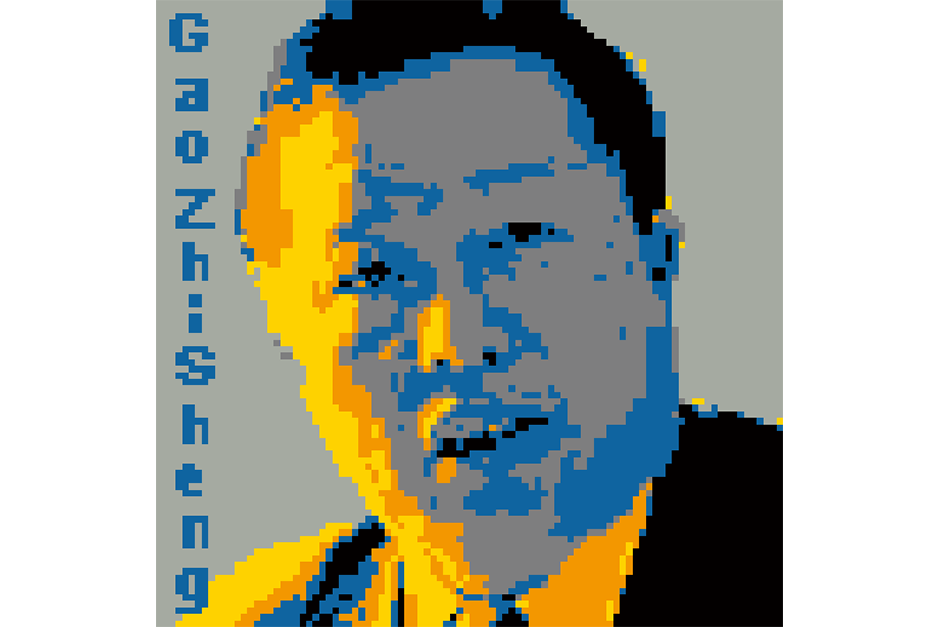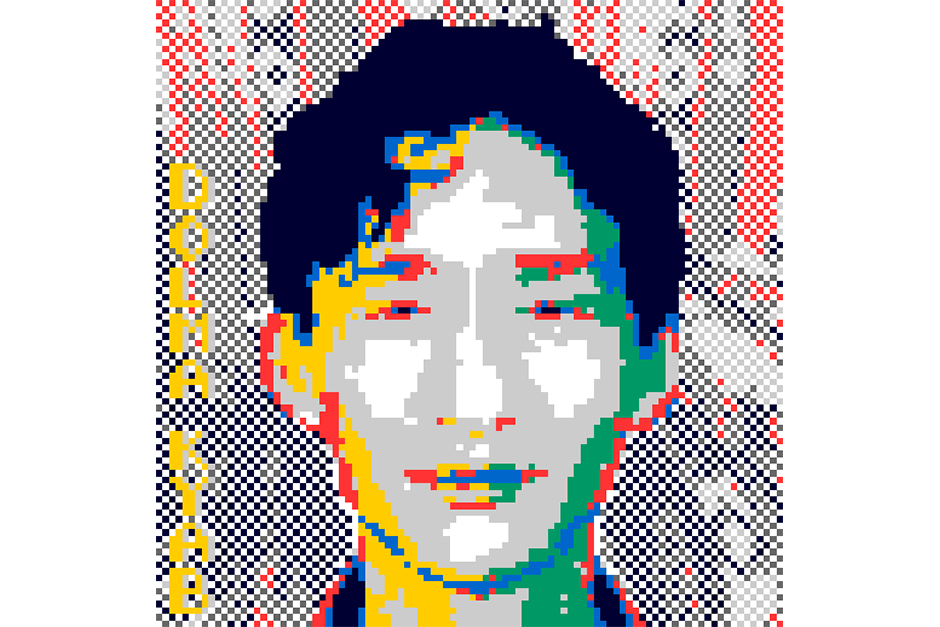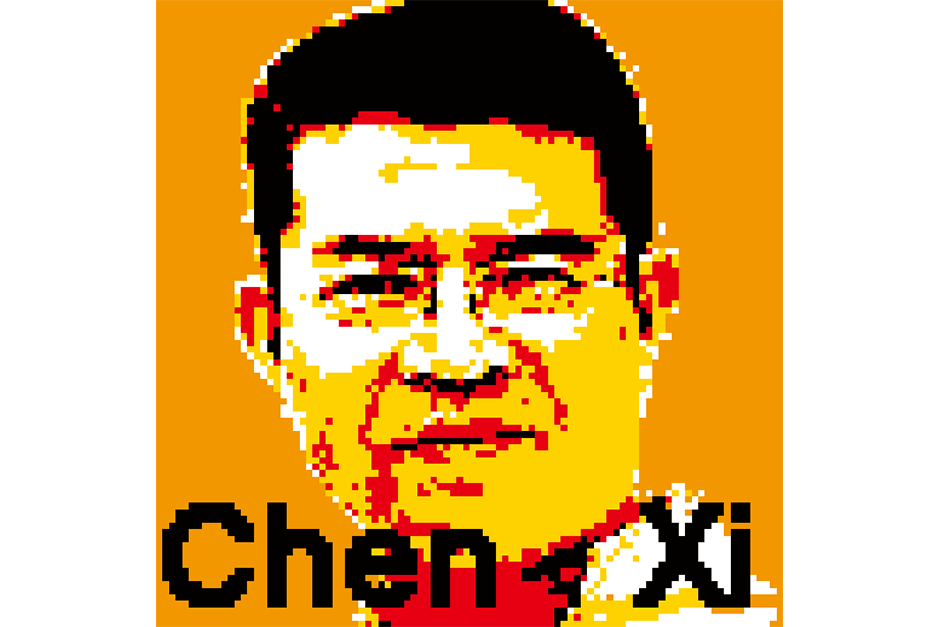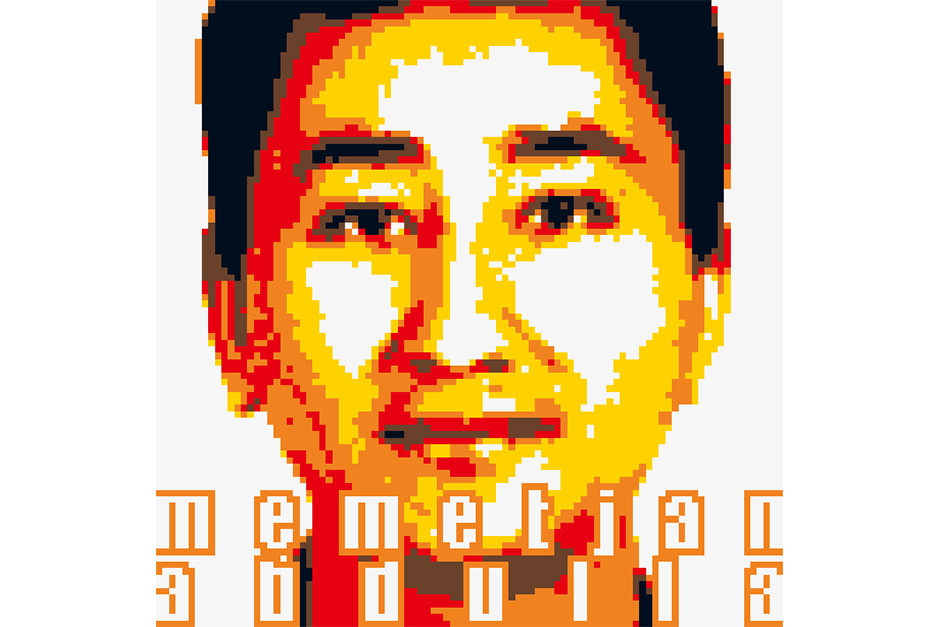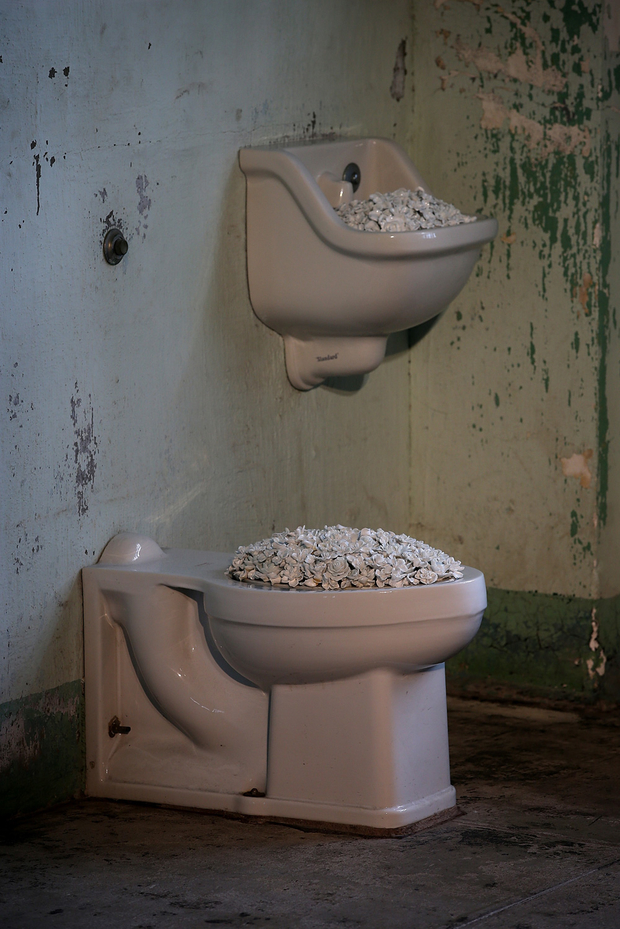The ongoing exhibition “@Large: Ai Weiwei at Alcatraz” is both revelatory and heart-wrenching, a stunning and sobering work by an artist who understands firsthand the fragility and pricelessness of freedom.
Detained without warning or charge for 81 days in 2011, Ai Weiwei now lives and works in a courtyard house with a teal blue gate in the Caochangdi arts district of Beijing. Across the street is a surveillance camera from which Ai has hung a cheery red lantern; outside the gate is a Giant brand bicycle with a metal basket that Ai fills with fresh flowers each morning¬—a practice he plans to maintain until the Chinese government returns his passport and the right to travel internationally, denied him since his detention. Within the spacious courtyard, plump tabby cats wander through stands of gently swaying bamboo and an international staff of assistants shepherd visitors and oversee the execution of Ai’s many ongoing projects. As my husband and I sat down to chat with Ai one day this summer, the fattest cat leapt onto my lap, curled up, and began to purr.
“I’m very grateful about life and our unpredictable chance to be here,” Ai told us. “Everything could be much worse—you think of the desperation some people live in.”
Indeed, even as Ai now leads what he calls “a peaceful life,” “@Large” demonstrates that he has not forgotten those whose lives remain desperate, among them prisoners of conscience worldwide. Viewed collectively the seven installations that comprise the exhibition, curated by Cheryl Haines and presented by the For-Site Foundation, celebrate freedom, mourn its loss, demand its recognition as a basic human right, and honor those who have lost it because of ideas or affiliations. And the exhibit does so all from within the forbidding confines of the infamous former federal penitentiary that stands atop a windswept island in the middle of San Francisco Bay. Although Alcatraz is visited each year by huge colonies of seabirds, 1.3 million tourists and, I suspect, the occasional fright of lingering ghosts, Ai Weiwei has never set foot there, viewing it remotely over Skype and collaborating online—a fact that makes the successful, site-specific installation all the more remarkable.
“@Large” begins in the bleakly beautiful New Industries Building, where prisoners once followed Alcatraz Regulation 21: “You are required to work at whatever you are told to do.” Often, this was sewing prison uniforms in the vast, sunlit room with its tantalizing view of the Golden Gate Bridge. It is here, in the first of two halls, that Ai has stationed “With Wind,” a giant dragon constructed of hand-made kites emblazoned with quotes from people imprisoned or exiled for exercising what many deem basic freedoms, among them Nelson Mandela and Edward Snowden.
Ai Weiwei, Trace, 2014 (detail, artist rendering); image courtesy the artist's studio
“Trace” is a portrait series of 176 people from around the world who have been imprisoned or exiled because of their beliefs or affiliations. This gallery includes a selection of portraits of individuals detained or persecuted by China’s government. Each likeness was built by hand from LEGO bricks. These images are the artist’s rendering of the work. For-Site, the foundation that granted Ai Wei Wei a residency to develop this work, writes: “Assembling a multitude of small parts into a vast and complex whole, the work may bring to mind the relationship between the individual and the collective, a central dynamic in any society and a particularly charged one in contemporary China.”
Ai selected these individuals based on information provided by Amnesty International and other human rights organizations, as well as independent research by the artist’s studio and the For-Site Foundation.
Beyond the dragon, in an even vaster concrete space, is “Trace,” perhaps the centerpiece of the show. It consists of 176 portraits of prisoners of conscience; Ai calls them “heroes of our time.” Each image is constructed from colorful LEGO bricks—1.2 million, in all—and spread out on the worn, whitewashed floor. Viewers are able to walk freely around the portraits and then consult large books in which each prisoner is listed with a brief description of the circumstances of his or her detention. (The For-Site Foundation’s excellent website also documents the exhibition.) The bright colors and happy associations of the LEGO pieces at first seem to clash with the plight of the men and women depicted, not to mention with the peeling pillars, rusted ceiling pipes, shattered glass windows, and overhead “gun gallery,” from which armed guards once kept watch over prison laborers. But, ultimately, the quixotic material serves to emphasize the individual life force of each of the men and women portrayed who sacrificed everything for their beliefs, emphasizing the interconnectedness of us all. Indeed, even as “Trace” elicited my compassion for these prisoners of conscience, it also forced me to question the extent of my own complicity. We all write postcards for Amnesty International when we are in high school, but how many of us ever do anything else?
Fortunately, in the installation “Yours Truly,” which is in the prison’s spartan dining hall, visitors have a chance to do at least that: send postcards to 22 of the men and women introduced in “Trace.” The pre-addressed cards, decorated with representative birds and flowers from prisoners’ home countries, are arrayed on a tiered shelf and visitors are asked to choose one, sit down at the varnished wooden picnic tables where prisoners once ate, and write a note. The cards are then piled in mail baskets and sent off. I peeked into one basket, filled with hundreds of cards, and read this, addressed to the Thai magazine editor Somyot Prueksakasemsuk, who in 2013 was sentenced to 11 years in jail for lese majeste, the crime of criticizing the king. He now works as a librarian at the Bangkok Remand Prison:
Greetings from San Francisco. Librarians are civilizations’ memory keepers. Keep your own spirit strong.
In the grim confines of Cell Block A, where the installation “Stay Tuned” is located, visitors can sit in tiny, dank cells on three-legged metal stools and listen to the words and music of twelve prisoners featured in “Trace.” These include Martin Luther King, Jr.; the Czech composer Pavel Haas, who died at Auschwitz; the Russian feminist punk rock protest group Pussy Riot; the imprisoned Tibetan singer Lolo; and Liao Yiwu, the Chinese writer who was jailed for writing a poem that commemorated the events of 1989 and is now effectively exiled in Germany. (You can hear the installation online, as well.)
The prisoners of conscience featured in “@Large” come from 33 countries, although by far the biggest group, comprised of 38 people, is from China. Ai did not include himself in these ranks, perhaps because it would be superfluous but also, I think, because he remains habitually modest and seemingly unaffected by his international celebrity. Indeed, when I asked him about the ever-escalating accolades heaped on him as the art world’s “most powerful” living figure, or China’s “most dangerous” man, he said simply:
I never expected I would become like today, which is beyond my control. I have only been an artist for 10 years—2004 was my first show. Before that I was doing architecture and curating shows. In 2005, I opened my blog. People said, you could say so many things needed by society. I had never touched a computer before—I asked my assistants to help me learn to do it. But I realized social media was such a great thing—only because I am in China where there is no forum to put your ideas. I enjoyed the daily chats and I became very popular. It was like a bird who feels it has more feathers.
Then, he explained, the devastating Sichuan earthquake occurred and he began to document the deaths of children who died in poorly-built schoolhouses that crushed them at their desks, visiting hundreds of students’ homes and posting the names of more than 5,000 young victims on the Internet.
I tried to show people you cannot just sit there and criticize, you have to do something. But there was a limit to their tolerance—they shut down my blog. Since 2009, I could not post online in China. So I became dangerous to society but very popular with young people.
After 2009, he said, there were “too many stories.” He was beaten and hospitalized; his Shanghai studio was torn down; he was detained, released, and then accused of tax evasion. For years he has been closely watched and his movements restricted, to varying degrees.
So when you talk about Western popularity, I know of it from the Internet but I have not experienced it. One day I was walking in the park and a group of Korean students saw me. They said, “That’s Ai Weiwei!” So I started to realize, if Korean high school students know me, that must be something.”
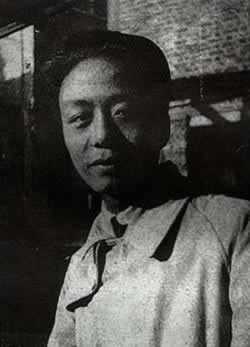
Another person who might have been but is not included in “Trace” is Ai’s own father, the renowned revolutionary poet Ai Qing. However, if his image is absent, his spirit nonetheless seems to permeate “@Large.”
Ai senior was born in 1910 to parents who ordered him not to call them mother and father because a fortune-teller had said he would bring trouble. “It was as if I had no parents,” Ai Qing later wrote in the preface to a bilingual edition of his poetry. “This made me detest fortune-telling and superstitions in general, and confirmed me as an atheist as well. In my early youth, I sought consolation in painting.” His head “filled with Romanticism,” Ai Qing went to study art in France but returned to China after the Japanese invasion so he could work with the League of Left-Wing Writers. In 1932, just months after his return, he was arrested by secret agents in Shanghai’s French concession, charged with “subverting the government,” and jailed for three years.
“He was sentenced for six years,” his son Ai Weiwei explained, “but the KMT [Kuomindang] had more mercy. He was a painter, he couldn’t paint in prison, but he could write. The KMT still let its prisoners write poems and pass [them] out.”
Ai Qing’s first volume of poetry, titled “Dayanhe,” after the peasant wet-nurse who he seems to have loved like a mother, was published in 1936. In 1941, with the help of Premier Zhou Enlai, Ai Qing went to the Communist base camp of Yan’an where he sometimes discussed literary policy with Mao Zedong (who he subsequently described as “the most impressive person I’ve ever encountered in my life”). The two men, warrior and poet, met several times in the spring of 1942 to talk about the intersection of art, literature, and politics. Mao asked Ai what he ought to do about certain problems in the literary world, and this was Ai’s reply, published in the preface to his selected works, was: “I said, in all innocence, ‘Call a meeting. You can explain things then.’ He said, ‘Will anyone listen to what I have to say?’ I answered, ‘At least I will be there.’” Mao then called the Yanan Forum on Arts and Literature in which he made a seminal speech regarding the relationship between art and politics that still echoes in China today.
Ai Qing’s poems are peopled by honest hired hands, hunchbacked old men, faithful women mending clothes, and barefoot farmers carrying bamboo baskets. They live in a land of blossoming flowers, turbulent rivers, golden fruit, and flying snow, but also of lugubrious skies, desolate stillness, and snow-laden graves. Ai Qing writes, in the poem “The North”:
I love this wretched country,
This age-old country,
This country
That has nourished what I have loved:
The world’s most long-suffering
And most venerable people.
References to freedom and its antithesis—prison and exile—also fill Ai’s poetry. In “A Smile” he writes:
Those teardrops
Were locked behind a thousand iron bars,
With only one key
That could unlock that kind of prison gate.
In “Facing the Sun” (1938) he describes himself locked “in the prison of my mind / All around me high gray walls.” And, again, in what may be my favorite of his poems, “Snow Falls on the Chinese Land”:
…I tell you, I too
Am a descendant of peasants.
From your carved face
So deeply etched with pain,
I can understand,
Understand so profoundly,
The hard years
Of people living on the plains.
No, I am not happier than you.
Lying in the river of time,
Often the waves of woe
Have entirely submerged me.
In wandering and in prison cells
I spent my very precious youth,
My life
Like yours
Has been seared.
Snow falls on the Chinese land:
Cold blockades China....
Ai Qing’s passionate patriotism served him well in poetry but not in politics. Although he was appointed Deputy Editor of the prestigious official literary magazine People’s Literature, in 1949, by 1957 he had been labeled a rightist and exiled, first to a labor camp in Heilongjiang and then to remote Xinjiang.
“I’m the landmark of his falling down,” Ai Weiwei said ruefully, referring to the fact that he was born the same year his father was branded a rightist. “He was ‘an enemy of the state,’ but he was the most peaceful type. He could wear a pair of Chinese cloth shoes for two years. He was so peaceful and gentle.”
Ai Weiwei grew up in Shihezi, Xinjiang, and in his youth read the works of Whitman, Mayakovsky, and Neruda, poets greatly admired by his father. “When I first went to America,” Ai Weiwei remembered with a laugh, “in my mind it was like Whitman and Twain—and then I found myself in New York!” However the two men, father and son, “didn’t have much communication,” according to Ai Weiwei, who says he has only read some of his father’s poems. (According to his obituary in The Independent, Ai Qing wrote “over 20 lyrical and narrative poems as well as 1,000 short poems and nearly 200 essays.”) In his son’s recollection, Ai Qing was “critical” of him as a child, and for years Ai Weiwei did not consider his father to be much of an influence. Ai Weiwei left New York to return to China in 1993 because his father was ill. Ai Qing died three years later.
“I used to say he didn’t influence me at all—but now I see he did. He was very stubborn and naive. I’m not as naive… I think why I have become like today—what are the ingredients of my childhood, my family, and I think of my father’s deep passion for art even in the most difficult time.”
Ai Qing never gave up his determination to sing of the unsung, to lend poetic dignity to the downtrodden and desperate, to fight for freedom with his pen. When the Cultural Revolution ended and he could once again write freely, Ai Qing picked up right where he left off. Indeed, in 1979 he wrote the impassioned “Hush, A Voice is Speaking” to commemorate Zhang Zhixin, a loyal Communist Party cadre who was arrested in 1969 when she argued against the cult of personality constructed around Mao and criticized ultra-leftists such as Mao’s wife, Jiang Qing. Ai wrote, in Zhang’s voice:
I love brightness most of all
So you kept me from the sun
I love freedom most of all
So you took me and put me in jail.
Zhang, a mother of two, was locked up for six years and executed in 1975. Before shooting her, the executioners cut out her vocal cords so she could not call out as she died. (Some stalwart Communists killed in the Cultural Revolution shouted “Long Live Chairman Mao!” as they died, their faith in Mao undimmed even as they were about to be killed.)
In order to stop up my mouth
So that I won’t cry out to the world
You raise your vicious hand
As if slitting a chicken you slit my throat.
The poem continues with Zhang’s voice explaining that she is not alone (“I am we, and we are numberless”) and:
One day the people will speak out for me
One day the people will make images of me
One day the people will write music for me
One day the people will sing songs for me.
While Ai Qing spoke out with verse, his son speaks out on Twitter, creates images with LEGO, and makes music and song for performance on YouTube. Though their media are different, the message is fundamentally the same, as are the integrity, determination, and fearlessness required to continually speak out in a nation, and a world, where one can be jailed for nothing more than having a contrarian opinion.
“The poet must speak the truth,” Ai Qing wrote in a 1978 preface to a collection of his poetry. “You hear people say, ‘So-and-so’s poems are popular because they express what is in the hearts of the people.’ I don’t think that explains it all. I would say, ‘So-and-so’s poems are popular because he speaks the truth—straight from his heart.’”
And Ai Weiwei, in the artist’s statement he wrote to accompany “@Large,” said this:
Any artist who isn’t an activist is a dead artist. I try to make my works honestly with respect to my life, to reflect the place and time in which I live. I hope that when future generations see my work they will understand my struggle as an artist. I also hope that visitors to @Large will be conscious of artists’ efforts to protect freedom of speech and expression, and that they gain an understanding of the purpose of art, which is the fight for freedom.




